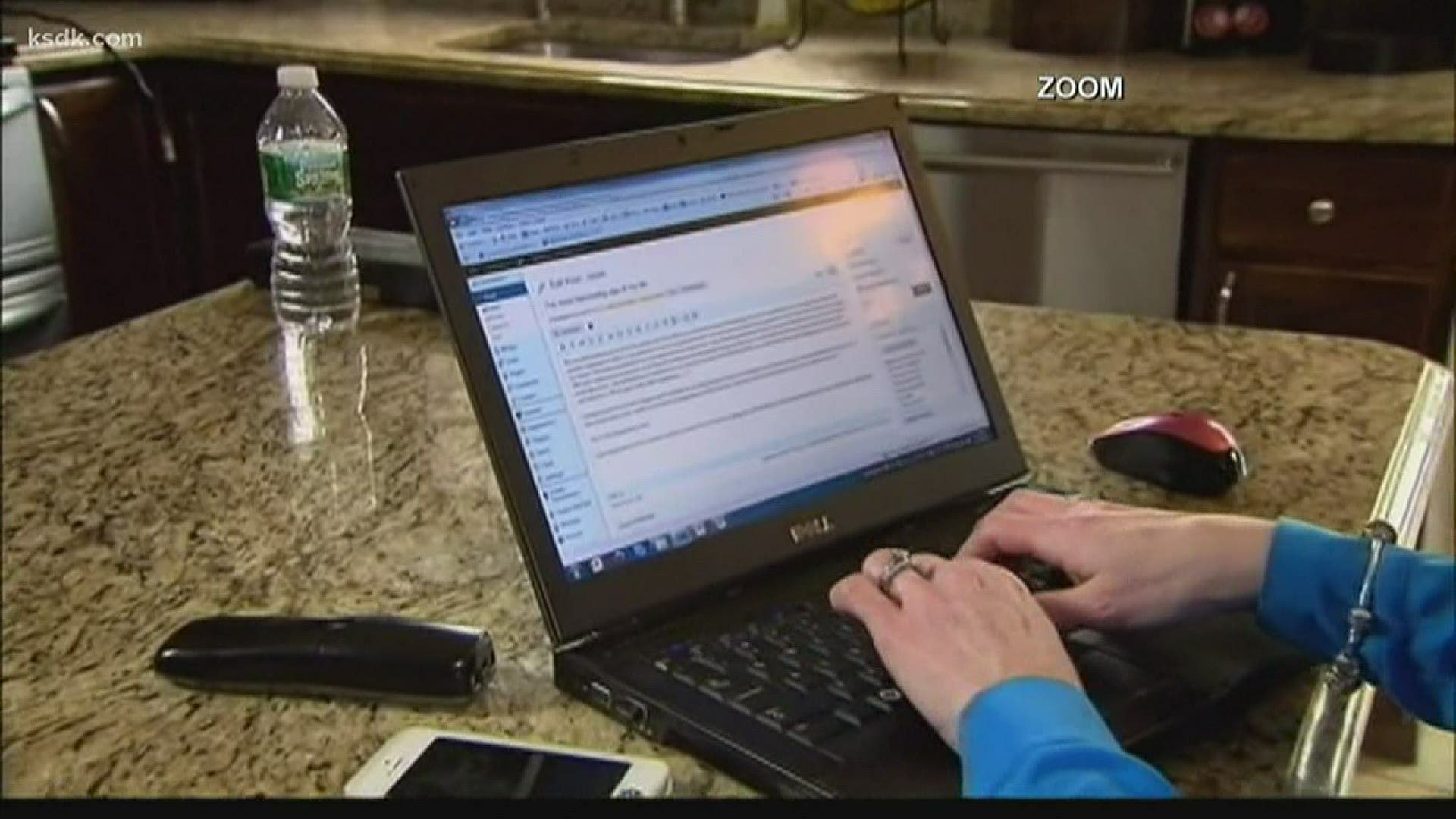ST. LOUIS — If you spent the last few weeks being your own IT, cafeteria, and office manager, you’re not alone. Workers all over the United States are staying home to avoid spreading coronavirus while doing their jobs. After trading commutes and suits for kitchen tables and sweatpants, some employees might dread returning to a desk. Following national trends, employers could prefer to keep some of those workers at home.
As the total count of diagnosed cases of COVID-19 surpasses half a million people across the United States, it’s no surprise that life is different now than it was just months ago. A survey by researchers from MIT found that more than one-third of workers said they have switched from commuting to working from home during the coronavirus pandemic.
They’re joining a trend that was growing for years already. Research from the Federal Reserve Bank of St. Louis estimates that three percent of full-time employees in the US primarily worked from home in 2017.
That’s a big increase from 1980 when less than one percent of full-time employees worked remotely.
Managing a remote workforce
Sri Chellappa, co-founder of St. Louis-based Engagedly, has been helping businesses make the transition. Even though technology makes it easier than ever to collaborate remotely, he says businesses had to adapt their infrastructures to connect their workers.
“Companies weren’t set up to give each employee a laptop to work from home or have secure access to a VPN [virtual private network],” he said. They found VPNs couldn’t keep up with so much traffic, and schedules and goals that were written on whiteboards needed to be translated to collaboration software.
Some states have transitioned to remote work more smoothly than others. Survey responses in Missouri and Illinois show that more than 40% of full-time workers say they switched from commuting to staying home. They were more likely to be working from home, and less likely to have been laid off or furloughed, than workers in neighboring states Arkansas and Iowa.
Now that so many companies have worked out the finer details of running a remote workforce, it might start to look like a long-term way to save parents time and money on childcare or retain employees whose commutes are getting too long.
Who will keep working from home?
The Federal Reserve Bank points to the most obvious cause for the rise in remote work, particularly since it started becoming more common in 2005. Advances in technology have made the transition easy for certain professions.
Researchers from the University of Chicago estimate that eight out of every 10 jobs in the professional, educational, scientific, and technical services industries could be done from home.
They determined that around 38 percent of the St. Louis metropolitan region has a job that could make the leap to remote work.
Who’s going back to the workplace soonest? Many of the people who are considered essential workers today, including transportation, food, agriculture, and construction employees, will never be able to work from home, according to the white paper. The researchers add that retail sales workers, forestry, and warehousing can’t be done remotely.
That means that sooner or later, most of St. Louis will be coming back to the workplace. The Bureau of Labor Statistics says that St. Louis has more than its share of museum curators, metalworkers, and sports officials, all jobs done mostly or entirely in person.
And as in any city, the most common jobs in the metro area can’t be done at home: fast-food workers, retail sales, and registered nurses.
The new business-as-usual
Some workers might be thinking about staying home after the pandemic is over. After all, who would give up a mostly private bathroom, your choice of background music, or a personal pot of coffee? The employees at the second largest employer in St. Louis might get that option.
In 2014, President Barack Obama signed a presidential memo giving federal agencies more flexibility for where and how their employees work. More than 24,000 people in the St. Louis region work for the federal government. Under the memo, they can request telework or flexible scheduling. The policy is intended to help retain and attract talented workers.
Chellappa points out that many parents will be stuck working from home as long as childcare facilities and schools are closed, even if it’s safe to return to the workplace. After that, “I don’t know if it’ll be overwhelmingly 40 percent,” he said.
“Now that they’ve figured it out,” he added, “some could have more relaxed policies where people could work from home for part of the week.”
Research published in Germany adds that there might be a hidden advantage of remote work for women with children. It could help close the earnings gap between men and women by helping women work more hours after they’ve had children.
There’s a cost to integrating work with homework, though. Analysis of data from the Bureau of Labor Statistics found that people who worked remotely reported increased stress, especially women.
Chellappa says the transition is still ongoing for lots of businesses. Engagedly is offering a set of software for remote work for free until the end of September to help organizations meet the challenge. In the end, though, Chellappa said, “People still want to see each other. But we’re still months out.”

